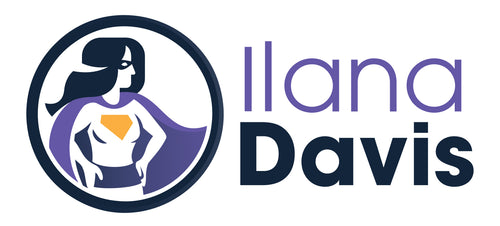Measuring the benefits of structured data
Published: February 27, 2024
It can be hard to invest money into an industry such as SEO where so much of it feels like it's covered in snake oil.
Rich Results and the use of structured data to qualify for search enhancements is no different.
At least once a week I'm asked how to measure JSON-LD for SEO and the impact structured data has on Shopify stores. These are just a few of the questions I get.
Just how much of a difference will the structured data provided by your app make to my revenue?
Is there a way to view the performance of JSON-LD like before/after?
I'd like to know if it can make a real difference in terms of traffic and revenue on our site.
Is there a way to track the before and after SEO benefits and gains prior and then after to using JSON-LD for SEO?
What statistical benefits have we gained after our purchase?
Measuring any of this stuff with a high degree of certainty is hard. Very, very hard.
Every store is different and has different mixes of marketing. This makes it difficult to pinpoint exactly who and what was responsible for an improvement.
Benefits of using structured data
Reading through some of our case studies, you'll find a wide range of results.
- 122% increase in traffic YoY
- 20% increase in CTR
- 20% increase in traffic
- 3x increase in conversion rate
- 200% more organic impressions
As you can see, structured data can have a wide impact depending on the store and its other marketing efforts.
JSON-LD for SEO and adding structured data in general doesn't happen in a bubble. Organic traffic fluctuates all the time and can be impacted by a number of things (algorithm changes, content changes, theme changes, economy as a whole...). Making it even more difficult to know if a change in your results, for better or worse, was due to a single change.
Measuring results
Ideally, adding structured data will help you get Rich Results. This would lead to more information in search results, leading to more visitors clicking your result, leading to more traffic and hopefully more sales.
There are an infinite number of things that can impact organic traffic. So it can be near impossible to know if adding structured data was the direct cause, but you might be able to spot a trend.
Some customers will see results in the first few weeks, others might take a month or two.
On average, customers begin to see results around 34 days and 97% of stores see Rich Results within 6 months.
More likely, it typically takes eight to eleven weeks before Google's analysis is complete and your site's structured data is incorporated into the search results.
Here are a few places where you may be able to see the impact the structured data from JSON-LD for SEO could have on your store.
1. Rich Results
The main result of adding structured data from the app is Rich Results. Though there are many different types of Rich Results you can qualify for with JSON-LD for SEO, the most important one for e-commerce is Product Rich Results. The best way to easily see all your Product Rich Results is to use a special search. This is faster than trying keywords and searching page by page.
To see only your product pages, use site:example.com inurl:products. If you're seeing a lot of collection pages, try site:example.com inurl:products -inurl:collections to remove any collection pages from your results.
It’s not 100% accurate because Google might show different results for individual searches and different results on mobile vs desktop. Additionally, using the site search doesn't show you all pages that are indexed. Google may only show a selection of pages, but it will give you a rough assessment of your Rich Results.
Sadly, there isn't a single report that says how many search results have Rich Results. Google's Search Console Enhancements report shows the number of pages (roughly) with qualifying structured data, but they don't show you if you have Rich Results.
That's why we monitor results for every new install of JSON-LD for SEO and share your results with you when you have them
2. Merchant Center
Another result you might experience is your free listings and paid ads via Google Merchant Center are approved more easily. This is especially the case if in the past you received a Mismatched Pricing Error in Merchant Center. Structured data is used by Merchant Center to validate your product feed. If you're ads are working, that's in part from the data added by JSON-LD for SEO.
If you see errors in your Merchant Center, check my Shopify and Google Merchant Center guide or contact me if you need help. The guide outlines most of the common issues and how to fix them.
3. Organic traffic
As mentioned above, structured data allows you to qualify for Rich Results. As such, I would expect to see your organic traffic increase. Since structured data doesn't work in a bubble, it's possible for organic traffic to fluctuate as normal, but overall the trend should be going up.
A good place to check if your organic traffic has changed is in Google Analytics. Look at Reports -> Acquisition -> Traffic Acquisition to find the organic traffic.
Or, if GA4 wasn't set up on your site, you can use Shopify's traffic source under Analytics -> Sessions by traffic source.

If you notice your organic traffic not progressing, check to make sure the structured data is good.
4. Click-through rate
Another place to look at your traffic improvements is in Google Search Console. Search Console is at best a few days behind and its historical data is limited. However, you may get a general idea of the before and after impacts if you measure your results within a year of adding the data.
Look at the Performance section of Search Console. This report will show you what keywords you’re ranking for, where you’re ranking, how much traffic they’ve sent, and the click-through rate (CTR).

You’ll want to look at a bunch of different keywords that correspond to your products to get a complete picture of your changes over time. Defaulting to the overall performance works, but may not be the best picture.
Rich Results won’t directly impact your ranking. Since they are more visual than regular results, you should be able to see an increase in the level of traffic and click-through rate.
5. Conversion rates
Another place you can look at is your store’s conversion rate. Use a tool that allows you to view conversions with organic traffic as the source.
Ideally, you’ll see an increase in the conversion rate for organic traffic. A visitor who saw your products in Google along with the price, availability, and reviews would visit knowing more about your product than your regular site visitor.
Other metrics such as average order value are indifferent to Rich Results.
Summary
Those are a great place to start measuring the benefits of structured data and JSON-LD for SEO in your Shopify store.
All of these are subject to other changes you make in your store, market cycles, what your competitors do, what Google does, the phase of the moon, etc.
Even something that sounds simple like updating your theme could have unintended impacts on your SEO in general.
Today would be a good day to Install JSON-LD for SEO if you haven’t yet. The sooner it's installed, the sooner you'll qualify for search enhancements and reap the rewards of your hard-earned efforts.
JSON-LD for SEO
Get more organic search traffic from Google without having to fight for better rankings by utilizing search enhancements called Rich Results.




